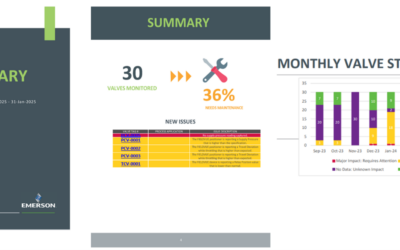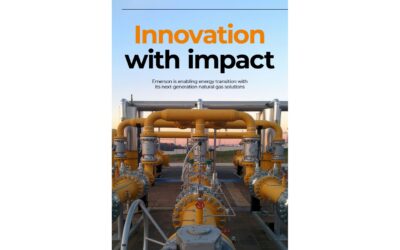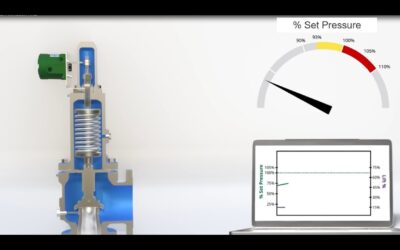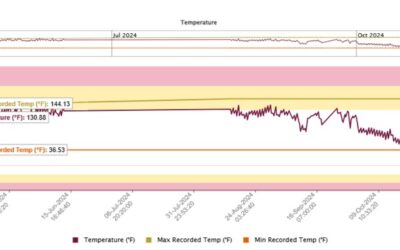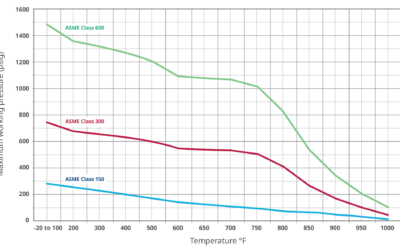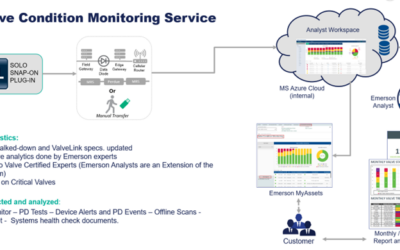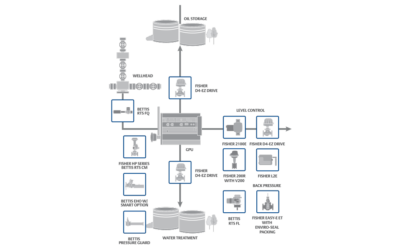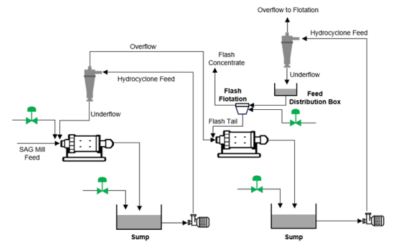At the Emerson Exchange 2025 Conference, Control Southern’s Jordan Cain and Emerson’s Daniel Busch presented “Using Smart Valve Positioners to Cut Downtime and Optimize Outages”.
Fisher
Innovative Technologies for Gas Transmission and Distribution
In an Energy, Oil & Gas magazine article, Innovation with impact, Emerson’s Trent Decker shares ways these innovations contribute to more sustainable operations.
Solving Tough Applications with Severe Service Valves
Emerson’s Chris Vergos, Justin Goodwin, and Shelby Daniels presented Toughest Application Challenges Solved with Severe Service Innovations at the Emerson Exchange 2025 conference.
Pressure Relief Valve Digital Position Monitoring
This 4:31 YouTube video, Fisher™ FIELDVUE™ 4400 Digital Position Transmitter for Crosby J-Series Pressure Relief Valves, provides a closer look at how this digital position transmitter enables real-time, high-accuracy valve lift data to track pressure relief events and calculate volumetric release.
Elevate Your Maintenance Game: The Power of Smart Positioners and Emerson’s Experts Analysis
During a recent presentation at Emerson Exchange 2025, Daniel Busch, Emerson Senior Valve Condition Monitoring Analyst, and Jordan Cain, Account Manager at Control Southern Inc., presented "Using Smart Positioners to Make Smart Decisions." An attendee asked, "Do you...
Alternative Valve Classes Provide Up to 50% Savings
When selecting a valve pressure class, users often limit consideration to familiar ASME B16.34 Standard Classes, but awareness of lesser-known ASME classes can lead to significant cost, size, and weight reductions, especially for high-pressure weld end valves. My...
Driving Performance with Digital Valve Controllers
Emerson’s Jaime Alvarado Millan, Nathan Krasnovsky, and Naman Tahan teamed up to present, Harnessing the Power of Digital Valve Controllers: Introducing Valve Reliability Suite™ Solutions, at the Emerson Exchange 2025 Conference. Here is their presentation abstract:...
Angular Coordinate Method for Compressor Surge Control
The angular coordinate method allows to simplify the multi-level operation of the compressor to a one-dimensional visualization of the safe operating zone, presenting it as a direct comparison of the process variable with the set value, which is the most common and convenient practice for plant operators monitoring processes in the DCS.
Reducing Wellhead Fugitive Emissions with Electric Actuators
For producers, transporters, and distributors in the hydrocarbon value chain, Emerson provides a portfolio of proven fugitive emissions solutions.
Control Valves for Ammonia Production Efficiency
Control valves are critical in the applications within the ammonia production process. Some applications are severe services that could cause challenges to the valve operation, impacting the process efficiency and may disrupt the production or even damage the equipment.
Role of Digital Valve Controllers in Modern Process Safety
Valves used in process safety applications remain static for much of their existence in a manufacturing or production process. Digital valve controllers can play an essential role in ensuring these valves operate as they should when called upon in an abnormal situation.
Optimizing Water Usage in Ore Mining Operations
A white paper, High-Performance Control Valves for Water Addition Processes in Ore Mining, highlights the importance of valve selection in reducing operational and maintenance costs, waste, and water usage.
Keep Up to Date With the Latest News and Updates
Follow Us
We invite you to follow us on Facebook, LinkedIn, Twitter and YouTube to stay up to date on the latest news, events and innovations that will help you face and solve your toughest challenges.
Do you want to reuse or translate content?
Just post a link to the entry and send us a quick note so we can share your work. Thank you very much.
Our Global Community
Emerson Exchange 365
The opinions expressed here are the personal opinions of the authors. Content published here is not read or approved by Emerson before it is posted and does not necessarily represent the views and opinions of Emerson.
